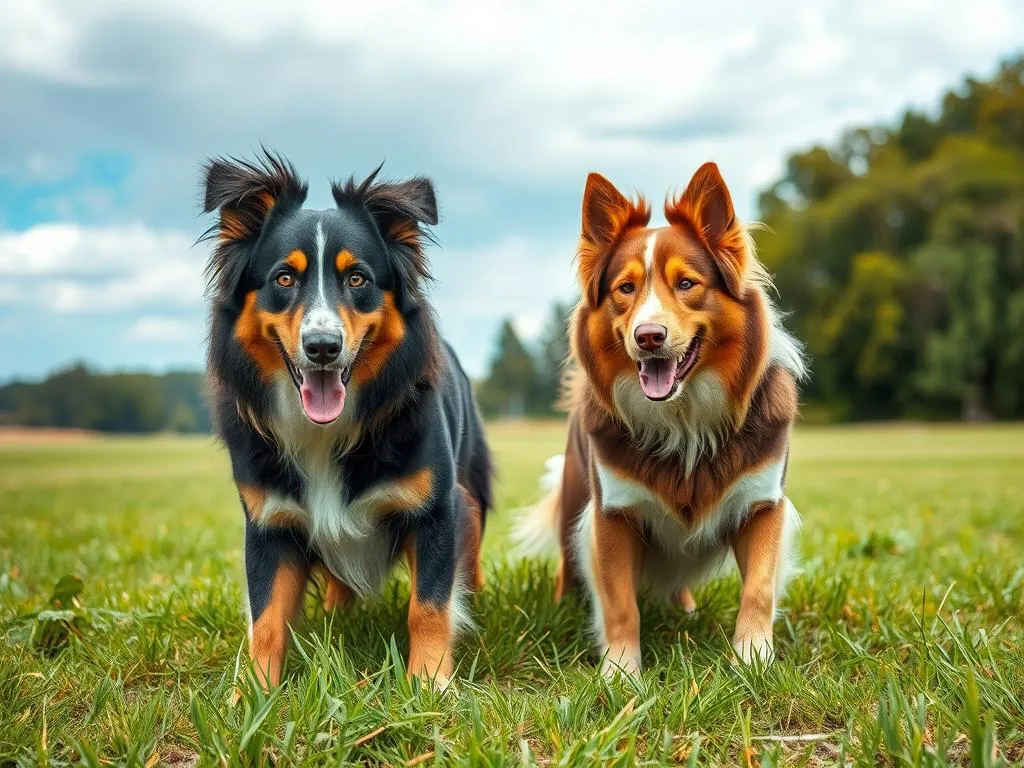
Introduction
Understanding dog behavior is crucial for anyone considering bringing a dog into their home. One of the most common concerns among potential dog owners is aggression. Are Australian Shepherds aggressive? This question is significant not only for those interested in adopting this breed but also for dog enthusiasts who wish to understand canine behavior more deeply.
Australian Shepherds, often simply called “Aussies,” are renowned for their intelligence, agility, and herding abilities. Originating in the United States in the 19th century, they were bred to work alongside shepherds in the open pastures. Their popularity has surged in recent years, making them a favorite among families, active individuals, and those seeking a loyal companion.
Understanding aggression in dogs, especially in breeds like the Australian Shepherd, requires a nuanced approach. This article will delve into the characteristics of this breed, the factors influencing aggression, and provide insights on how to prevent and manage aggressive behaviors.
Understanding Aggression in Dogs
Definition of Dog Aggression
Aggression in dogs refers to any behavior that is intended to harm or intimidate another dog or human. This can manifest in various forms, from growling and snapping to more severe attacks. It’s essential to recognize that aggression is not a standalone trait but a complex behavior influenced by multiple factors.
Types of Aggression
- Fear-based aggression: Often arises from a dog feeling threatened or scared. These dogs may lash out as a defensive mechanism.
- Territorial aggression: Dogs may become aggressive when they perceive their territory is being invaded, whether it’s their home, yard, or even their owner’s personal space.
- Protective aggression: This occurs when a dog feels the need to protect its family or belongings, which can lead to aggressive behavior towards perceived threats.
- Social aggression: Often seen among dogs that are not well-socialized, this type can occur during interactions with other dogs or humans.
Factors Influencing Aggression
Several factors contribute to aggressive behaviors in dogs:
- Genetics: Some breeds may have predispositions to certain aggressive behaviors, though this is not a definitive rule.
- Environment: A dog raised in a chaotic or abusive environment may develop aggressive tendencies.
- Socialization: Early exposure to various people, animals, and environments can mitigate fear and aggression.
- Training: Positive reinforcement training can reduce aggressive behaviors, while negative experiences may exacerbate them.
Characteristics of Australian Shepherds
Physical Traits
Australian Shepherds are medium-sized dogs, typically weighing between 40 to 65 pounds and standing about 18 to 23 inches tall. They have a distinctive coat that can be straight or wavy, coming in various colors such as blue merle, red merle, black, and red. Their striking appearance is complemented by expressive eyes that can be blue, brown, or even one of each.
Temperament
Known for their intelligence, Australian Shepherds are quick learners, which makes them highly trainable. They possess a high energy level and require regular exercise to keep them mentally and physically stimulated. As working dogs, they have strong herding instincts, which can lead to behaviors such as chasing and nipping if not properly managed.
Social Behavior
Aussies are generally friendly and affectionate towards their families. They thrive on human interaction and often form close bonds with their owners. However, their herding background means they may exhibit herding behaviors toward children or other pets if not appropriately trained.
Are Australian Shepherds Aggressive?
Common Misconceptions
Many people mistakenly believe that all working breeds, including Australian Shepherds, are inherently aggressive. This stereotype can lead to unwarranted fear and misunderstanding of the breed. In reality, an Australian Shepherd’s behavior heavily depends on its upbringing, training, and socialization, rather than its breed alone.
Behavioral Traits Specific to the Breed
Australian Shepherds are known for their high energy and intelligence, which can sometimes be misinterpreted as aggression. Their herding instincts can lead them to chase or nip at people or other animals, especially if they are not adequately trained. However, this behavior is often playful rather than aggressive, and it can be managed with appropriate training.
Aggression Statistics and Studies
Research on dog aggression indicates that Australian Shepherds do not rank high on the list of breeds known for aggressive incidents. While there are cases of aggression, they often stem from a lack of training or socialization rather than an inherent aggressive nature. Many Australian Shepherds are loving and gentle companions when raised in a nurturing environment.
Factors Contributing to Aggression in Australian Shepherds
Lack of Socialization
Socialization is critical for Australian Shepherds. If they are not exposed to various environments, people, and other animals during their formative months, they may develop fear-based aggression. Early and ongoing socialization helps them become well-adjusted and confident adults.
Inadequate Training
Training plays a pivotal role in shaping a dog’s behavior. An Australian Shepherd that is not properly trained may exhibit undesirable behaviors, including aggression. It is essential for owners to commit to consistent training using positive reinforcement methods to encourage good behavior.
Genetic Predispositions
While genetics can play a role in aggression, it is crucial to note that not all Australian Shepherds will exhibit aggressive tendencies. Responsible breeding practices can help minimize genetic predispositions, and many dogs in this breed thrive in loving environments where they receive ample training and socialization.
Preventing Aggression in Australian Shepherds
Socialization Techniques
To prevent aggression, it is vital to expose Australian Shepherds to different experiences from a young age. This includes meeting various people, encountering different animals, and exploring diverse environments. Puppy classes and playdates can be beneficial for social development.
Training Methods
Implementing positive reinforcement training techniques is essential for Australian Shepherds. Rewarding good behavior with treats, praise, or play can effectively reinforce desired actions. Consistency is key; owners should engage in regular training sessions to cultivate good manners and discourage aggression.
Creating a Safe Environment
Creating a safe and secure living space can help minimize stress and anxiety, which may lead to aggressive behaviors. Providing a designated area for the dog to retreat when feeling overwhelmed can be beneficial. Ensuring that the dog has enough mental and physical stimulation through toys and exercise is also critical.
Recognizing Signs of Aggression
Body Language Indicators
Recognizing the signs of aggression can prevent potential conflicts. Common indicators include:
- Growling: A warning sign that a dog may feel threatened or uncomfortable.
- Barking: While barking can indicate excitement, excessive barking may signal agitation or a desire to protect territory.
- Posturing: An aggressive dog may stand rigidly, with ears up and tail stiff, signaling that it feels threatened or defensive.
Behavioral Changes
Sudden changes in behavior may indicate underlying stress or aggression. If an Australian Shepherd that was previously friendly becomes withdrawn or aggressive, it may signal a need for intervention, either through training or professional help.
What to Do if Your Australian Shepherd Shows Aggressive Behavior
Immediate Steps to Take
If an Australian Shepherd exhibits aggressive behavior, the first step is to remain calm. Avoid yelling or making sudden movements that could escalate the situation. Instead, create distance between the aggressive dog and the perceived threat. Redirecting the dog’s attention with toys or commands can also help defuse the situation.
Seeking Professional Help
If aggressive behavior persists or escalates, it may be time to seek the assistance of a professional trainer or behaviorist. They can provide tailored strategies to address specific issues, ensuring the safety of both the dog and those around it.
Ongoing Management Strategies
Long-term management of aggression involves continued training, socialization, and monitoring of the dog’s behavior. Regular exercise is vital for channeling energy positively, and maintaining routine can help keep the dog feeling secure.
Conclusion
To summarize, are Australian Shepherds aggressive? The answer isn’t straightforward. While aggression can occur in any breed, it is not an inherent trait of Australian Shepherds. Instead, their behavior is shaped significantly by genetics, training, and socialization. Responsible ownership, including proper training and socialization, can lead to a loving, well-adjusted pet.
For potential owners, understanding the needs of Australian Shepherds and their propensity for certain behaviors is crucial. With the right approach, these intelligent and affectionate dogs can thrive and become cherished family members.









